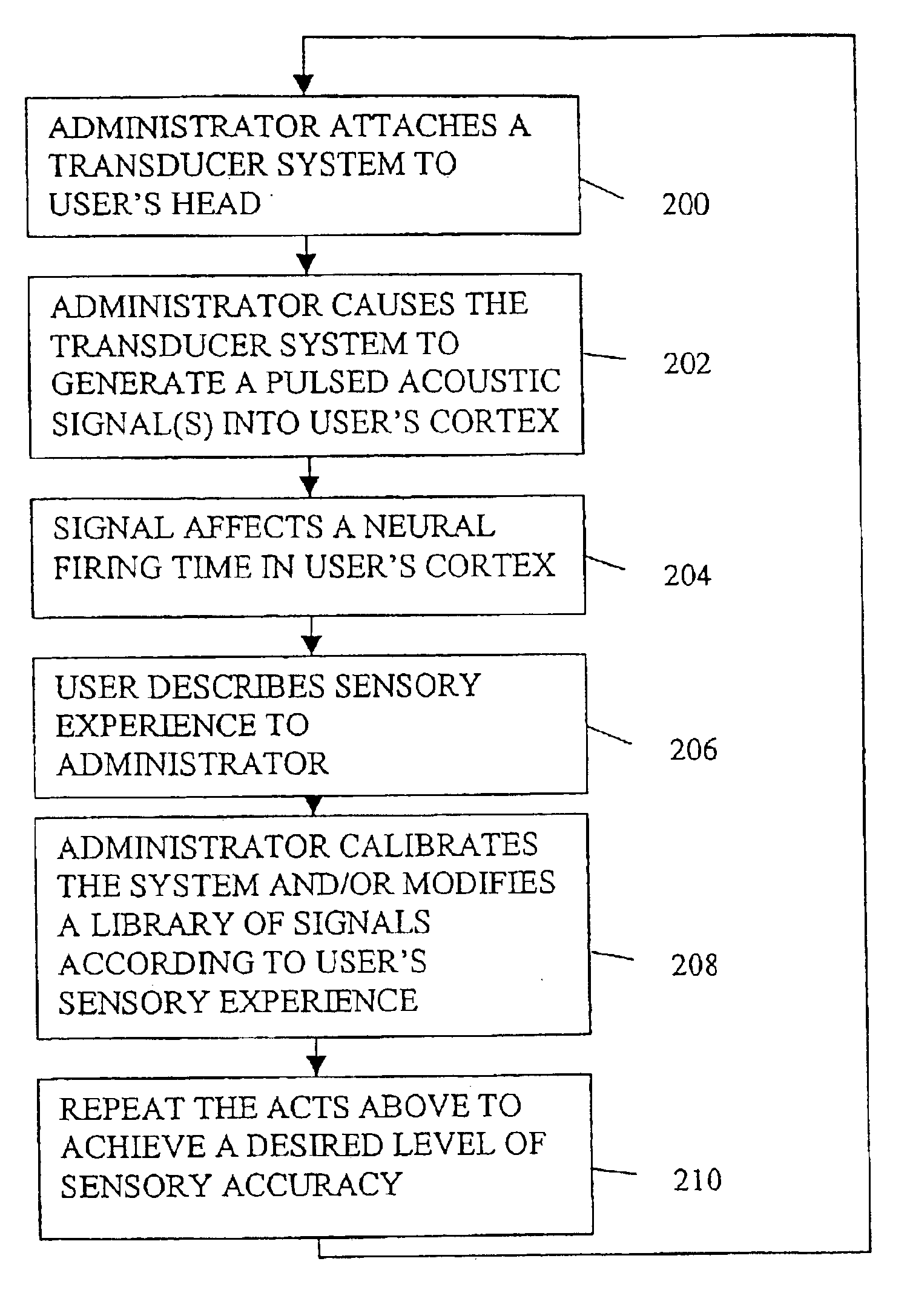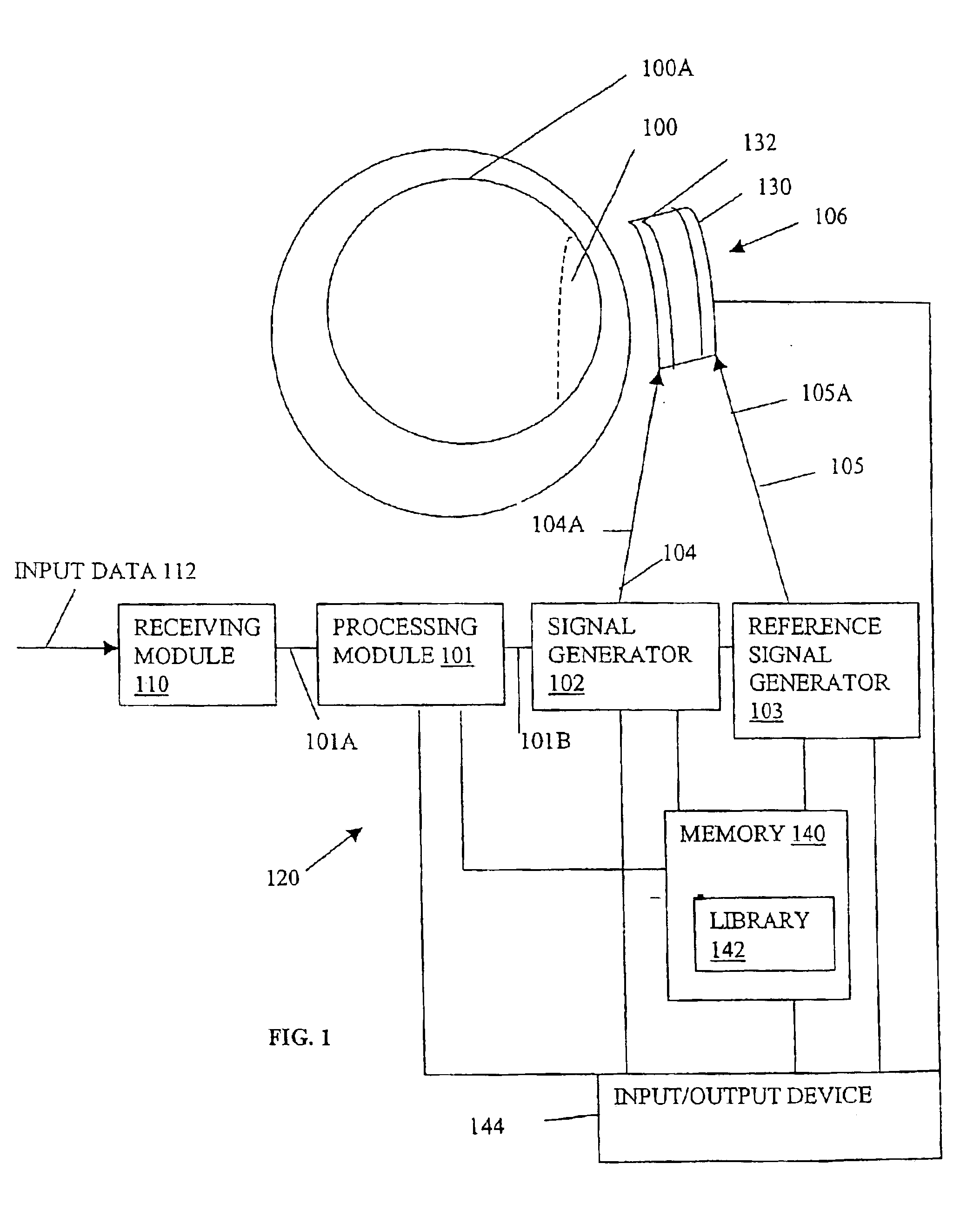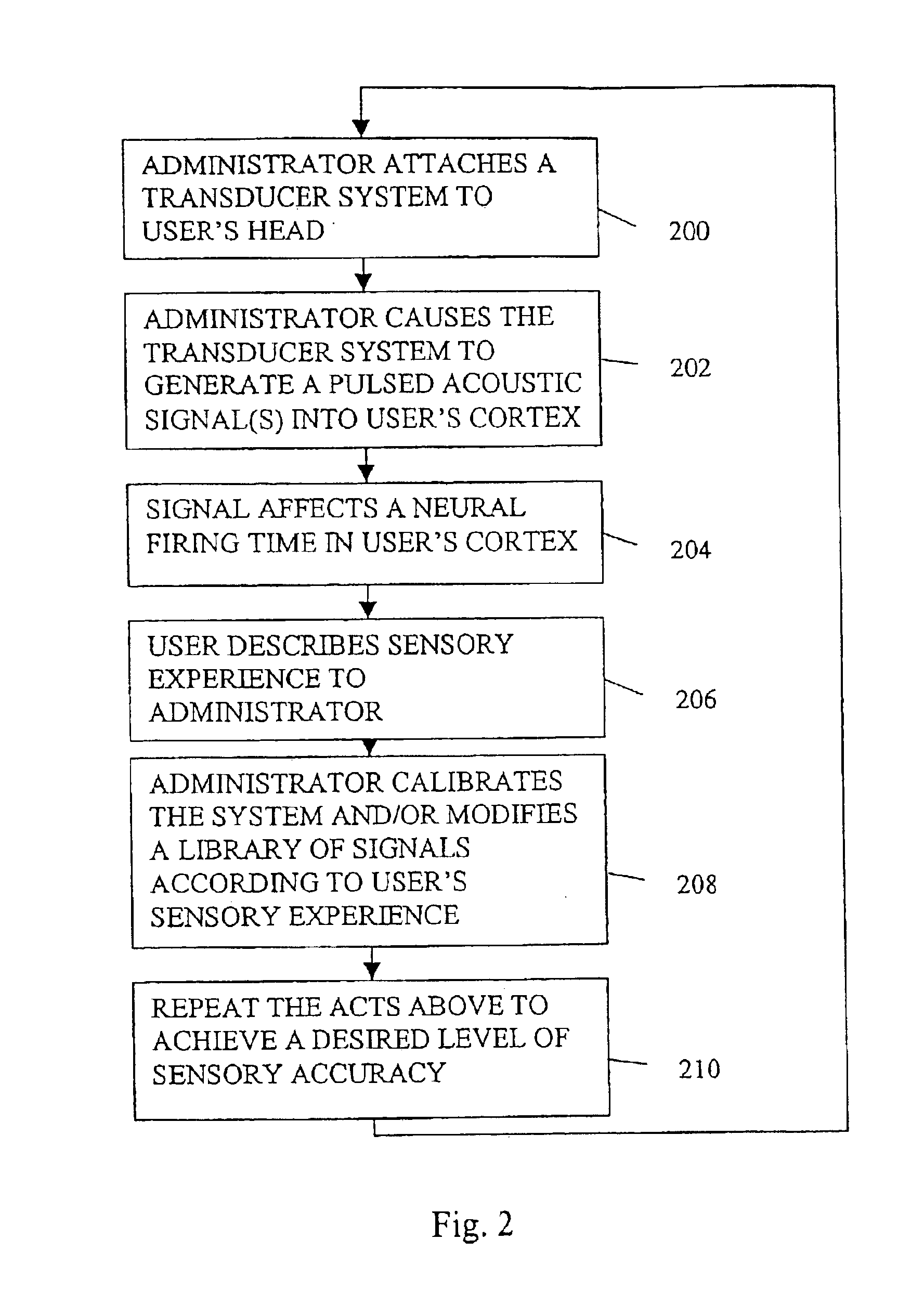Method and system for forming an acoustic signal from neural timing difference data
a neural timing difference and signal technology, applied in the field of sensory experience generation, can solve the problems of medical complications, additional or on-going surgery, patient trauma, etc., and achieve the effect of adaptability to each individual user
- Summary
- Abstract
- Description
- Claims
- Application Information
AI Technical Summary
Benefits of technology
Problems solved by technology
Method used
Image
Examples
Embodiment Construction
[0020]FIG. 1 illustrates one embodiment of a system1120 for generating sensory data onto a human neural cortex. The system 120 comprises a receiving module 110, a processing module 101, a signal generator 102, a reference signal generator 103, a transducer system 106, a first signal line 104, a second signal line 105, a memory 140 and an input / output device 144. All of the components, except the memory 140 and the input / output device 144, are described in U.S. Pat. No. 6,536,440, which is assigned to the Assignee of the present invention, and is hereby incorporated by reference in its entirety.
[0021]One or more of the components illustrated in FIG. 1, such as the transducer system 106, may be specially configured to generate visual, audio, taste, smell and / or touch within the human neural cortex. In one embodiment, some or all of the components of FIG. 1 may be integrated in a light-weight, compact device that may be strapped to a user, e.g. in a backpack or belt pack.
[0022]In FIG. ...
PUM
 Login to View More
Login to View More Abstract
Description
Claims
Application Information
 Login to View More
Login to View More - R&D
- Intellectual Property
- Life Sciences
- Materials
- Tech Scout
- Unparalleled Data Quality
- Higher Quality Content
- 60% Fewer Hallucinations
Browse by: Latest US Patents, China's latest patents, Technical Efficacy Thesaurus, Application Domain, Technology Topic, Popular Technical Reports.
© 2025 PatSnap. All rights reserved.Legal|Privacy policy|Modern Slavery Act Transparency Statement|Sitemap|About US| Contact US: help@patsnap.com



